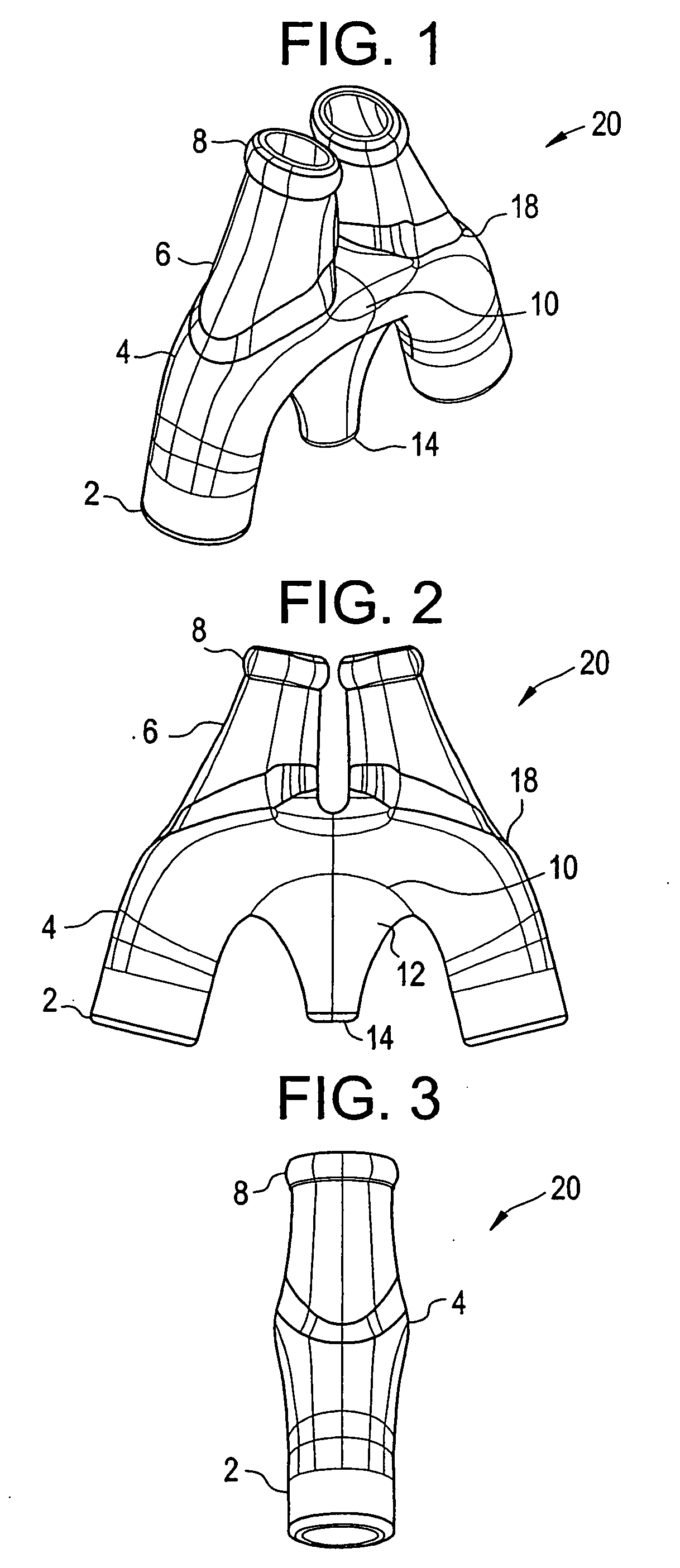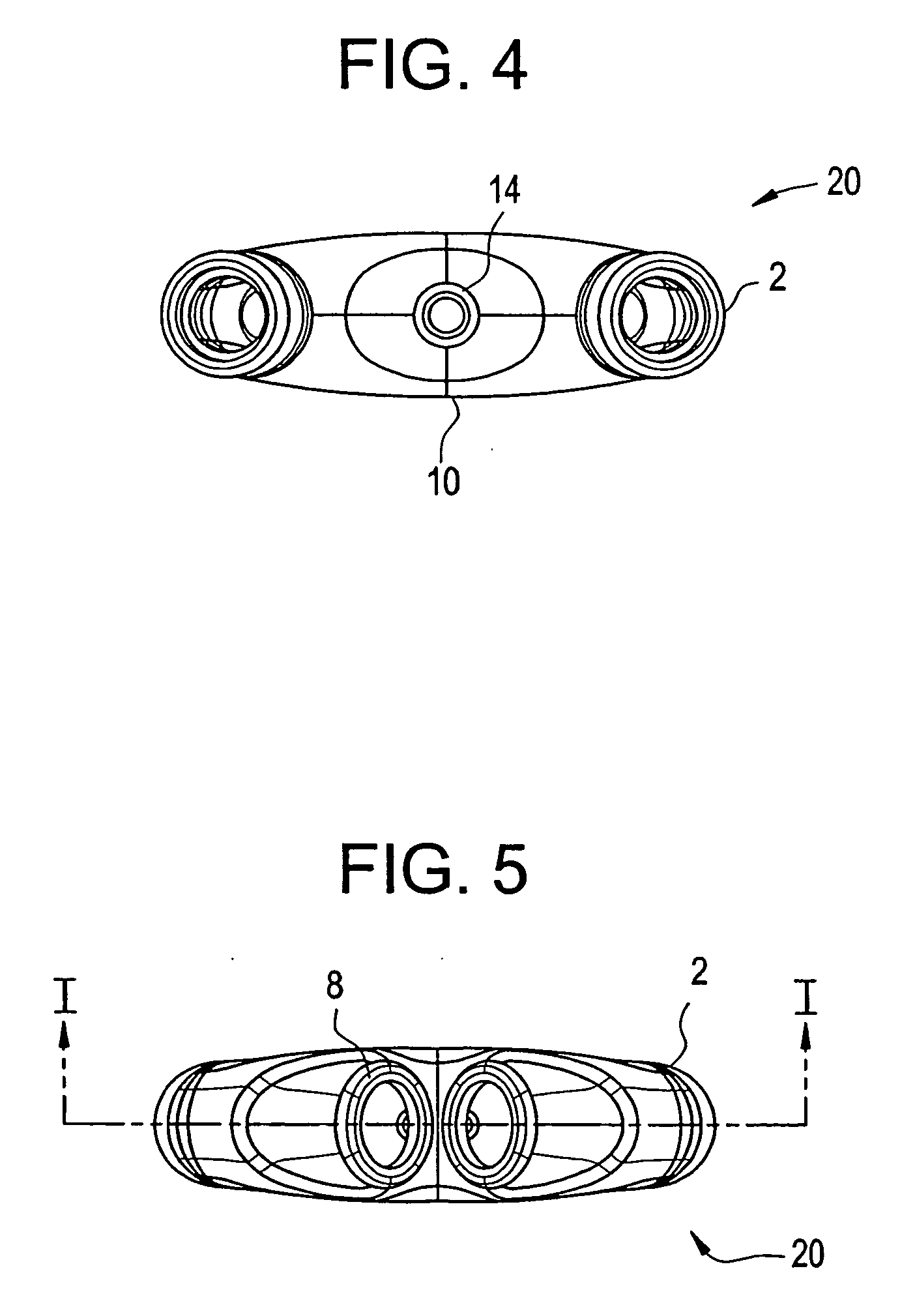Nasal ventilation interface and system
a ventilation interface and nasal tube technology, applied in the direction of breathing masks, inhalators, breathing protection, etc., can solve the problems of obstructive sleep apnea syndrome, affecting the sleep quality of patients, and affecting the quality of life of patients,
- Summary
- Abstract
- Description
- Claims
- Application Information
AI Technical Summary
Problems solved by technology
Method used
Image
Examples
Embodiment Construction
[0012] A first exemplary embodiment of the present invention provides a nasal ventilation interface including a cannula connectable to a source of ventilation gas via at least two ventilation connectors including at least one reservoir flange in close proximity with at least one nasal insert. The nasal ventilation interface further includes a seal portion positioned on a distal end of the at least one nasal insert and a central reservoir with at least one exhaust flange and an exhaust port positioned at a midpoint between the at least two ventilation connectors.
[0013] In a second exemplary embodiment, a nasal ventilation interface includes a cannula connectable to a source of ventilation gas via at least two ventilation connectors forming a first inflow portion. A reservoir flange forms a second inflow portion with at least one nasal insert. The nasal insert forms a third inflow portion and a first outflow portion. A seal portion with a substantially oval cross section is positione...
PUM
 Login to View More
Login to View More Abstract
Description
Claims
Application Information
 Login to View More
Login to View More - R&D
- Intellectual Property
- Life Sciences
- Materials
- Tech Scout
- Unparalleled Data Quality
- Higher Quality Content
- 60% Fewer Hallucinations
Browse by: Latest US Patents, China's latest patents, Technical Efficacy Thesaurus, Application Domain, Technology Topic, Popular Technical Reports.
© 2025 PatSnap. All rights reserved.Legal|Privacy policy|Modern Slavery Act Transparency Statement|Sitemap|About US| Contact US: help@patsnap.com



